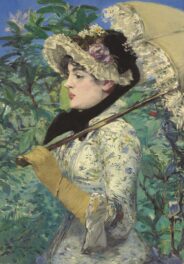
Man in Korean Costume, 1617, Peter Paul Rubens. Black and red chalk on paper, 15 1/8 x 9 1/4 in. The J. Paul Getty Museum, 83.GB.384
Throughout 2013, the Getty community participated in a rotation-curation experiment using the Getty Iris, Twitter, and Facebook. Each week a new staff member took the helm of our social media to chat with you directly and share a passion for a specific topic—from museum education to Renaissance art to web development. Getty Voices concluded in February 2014.
The adventure started over a simple lunch and a small book in my mother language. Stephanie Schrader, associate curator of drawings at the Getty Museum, shared her exhibition-in-conception with me and handed me a pocket-size book in Korean entitled The Joseon Man, Antonio Korea, Meets Rubens by Professor Kwak Cha-seop, a historian in South Korea. Never did I suspect back then that I would be working on the Looking East exhibition with Stephanie a few years later.
When my Getty graduate internship started in the fall of 2011, my involvement in Looking East quickly became more substantial. As a Korean studying the history of Western art in the United States, my ethnic and educational background was fundamental to the task of linguistic and cultural translation, which was crucial not only to understanding the exhibition’s theme of East-West contact, but also to connecting Getty staff with Korean collaborators in Los Angeles and Korea. This work mainly took the form of translating virtually all email and documents to English from Korean, and accompanying Stephanie as a translator on her business trip to Seoul and at many meetings with potential Korean-speaking financial and media sponsors. With a cross-cultural lens, I assisted with research, reviewed and edited the essays for the related publication, and wrote labels for some of the objects in the exhibition.

Stephanie and I (seated, far right) with colleagues at the National Museum of Korea, Seoul, in November 2011. Back row, standing: left to right: Lee Jae-jeong, Moon Dong Soo, Min Kil-hong. Front row, seated, left to right: Lee Won Bok, Burglind Jungmann, Stephanie Schrader, Jessie Park
The exhibition presents the earliest encounters between Korea/Asia and Europe, and this larger project of “looking East” established a platform for a dialogue between Korean costume historians, historians of Korean art, historians of European art, and Rubens scholars. This dialogue helped us to understand the enduring importance of Peter Paul Rubens’s “Man in Korean Costume” within Korea.
This exchange between scholars of multiple nationalities led to collaboration across the globe, resulting in a wonderful display of Korean and European works of art in one exhibition for the first time in the States, and much fruitful and exciting research presented at a recent symposium at the Getty. At the same time, this dialogue occasionally came with a culturally-filtered reading of the exhibition-related material. The perspectives from the East and the West made sense to me; I found myself standing between people of two different cultures, helping them understand each other.
Through the exhibition, the West looks east to further grasp the history, culture, and mentalities that uniquely shaped Korea and thereby to understand why Rubens’s incredible drawing continues to pique the interest of Koreans and, more broadly, Korean-Americans. Meanwhile, Korea looks west to trace its earliest encounters with Europe, albeit indirectly through the Jesuits in China, and to reconstruct its ability to captivate the eyes of Rubens, his contemporaries, and beyond. Rubens’s Man in Korean Costume is where the West meets the East, and the East meets the West.
Connect with more “Looking East, Looking West” content from Getty Voices:
- Curator Stephanie Schrader notices atypical qualities about this drawing that clue us in to its origins
- Paper conservator Nancy Yocco has had this drawing in her care for 30 years and knows it intimately
- Four perspectives the significance of the drawing from a symposium held at the Getty Center
- Video interviews with Youngsan Kim, Director of the Korean Cultural Center Los Angeles an Hyun-Sook Lee, Hanbok designer
- A video portrait of the beautiful and generous volunteers from the Korean Cultural Center in hanbok
- A free downloadable Korean cookbook with 9 recipes!




Comments on this post are now closed.
Trackbacks/Pingbacks